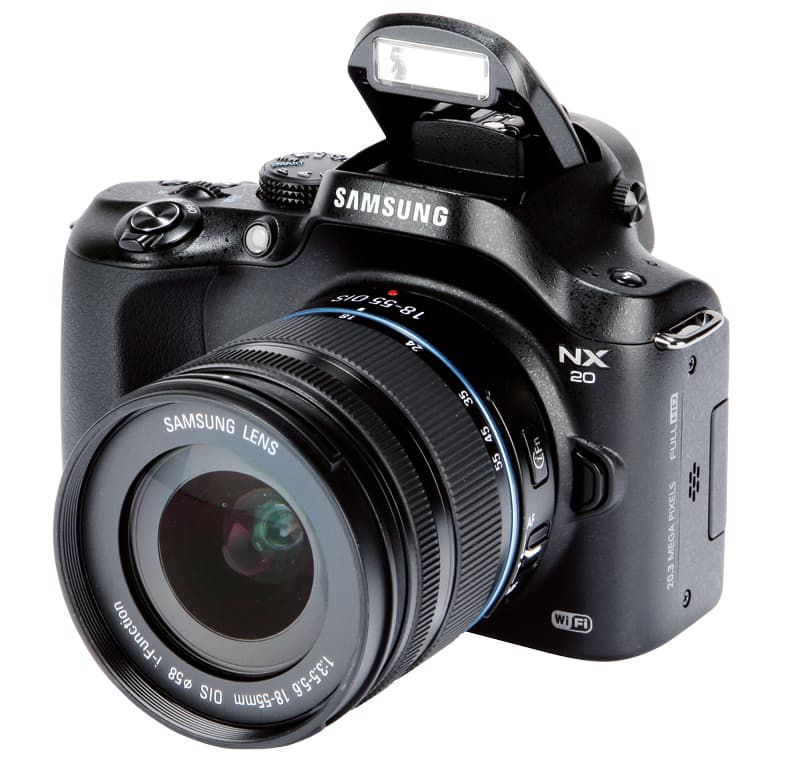Samsung NX20 at a glance:
- 20-million-pixel, APS-C CMOS sensor
- Built-in Wi-Fi for email, social networking and transfer
- ISO 100-12,800
- Flip-out AMOLED viewing screen
- 1.4-million-dot electronic viewfinder
- 1920 x 1080 HD movie mode
- 8fps continuous shooting
- 1/8000sec top shutter speed
- Street price £899.95
Samsung’s new top-end compact system camera is the first to offer an online connection for photographers in the field as well as at home, but does this built-in Wi-Fi have any real benefits?
Samsung was both early and late to the compact system camera market, announcing plans soon after Panasonic released details of the Lumix DMC-G1, but not actually producing a camera, the NX10, until 16 months later. The NX20 is the company’s fourth classic-shaped body – with that telltale bump on top that indicates a built-in electronic viewfinder – and its sixth model in two years.
The new camera was announced with a pair of ‘style’ flat-topped non-viewfinder models, the NX210 and the NX1000, which we have yet to use, and which take the total number of bodies to eight and the total in the current range to three.
These figures may seem drawn out, but the number of bodies in a company’s range is, I think, a good indicator of how serious a brand is about working in that sector. This will be the first time Samsung has had three concurrent models – entry, mid-range and top-end – and perhaps means that the company is more determined to make a go of things. The engineers are certainly making an effort to include new features, and have gone to some lengths to produce extremely good lenses, although until now the bodies seemed to lag somewhat behind the optics.
Those who follow Samsung’s compact camera range will know that wireless connectivity has been creeping into the WB and DV models for a while, but this is the first time the company has incorporated such technology into its NX cameras. This addition, and that of a viewfinder and articulated LCD screen, is the principal point of difference between the new NX20 and the outgoing NX200. Yet the form factor, with that broad right-hand grip, eyepiece viewing and slightly greater mass, suddenly gives Samsung’s premium lenses a more natural and comfortable home.
As a manufacturer of interchangeable-lens cameras, Samsung has been rather underrated by both the serious enthusiast and the photographic trade, but the company has produced consistently good image quality since the inception of the NX series, and now has its own large sensor. In this model, perhaps everything will come together and, if the NX20 is good enough, photographers may begin to take notice.








